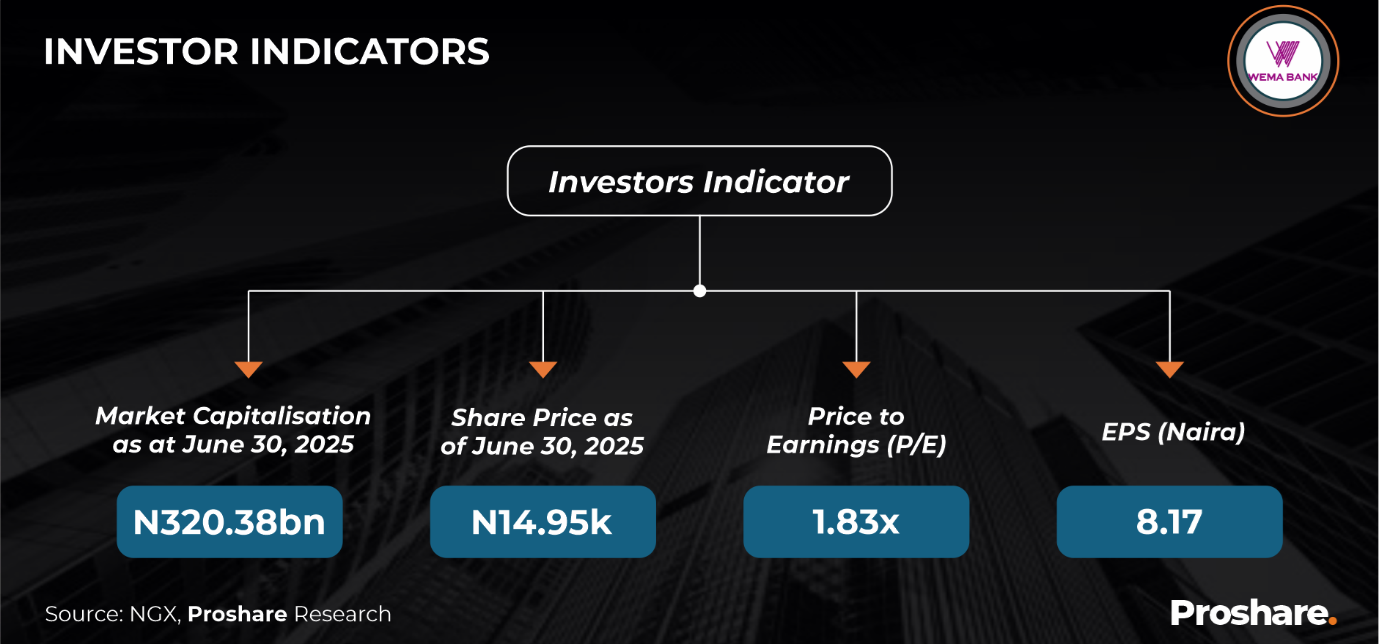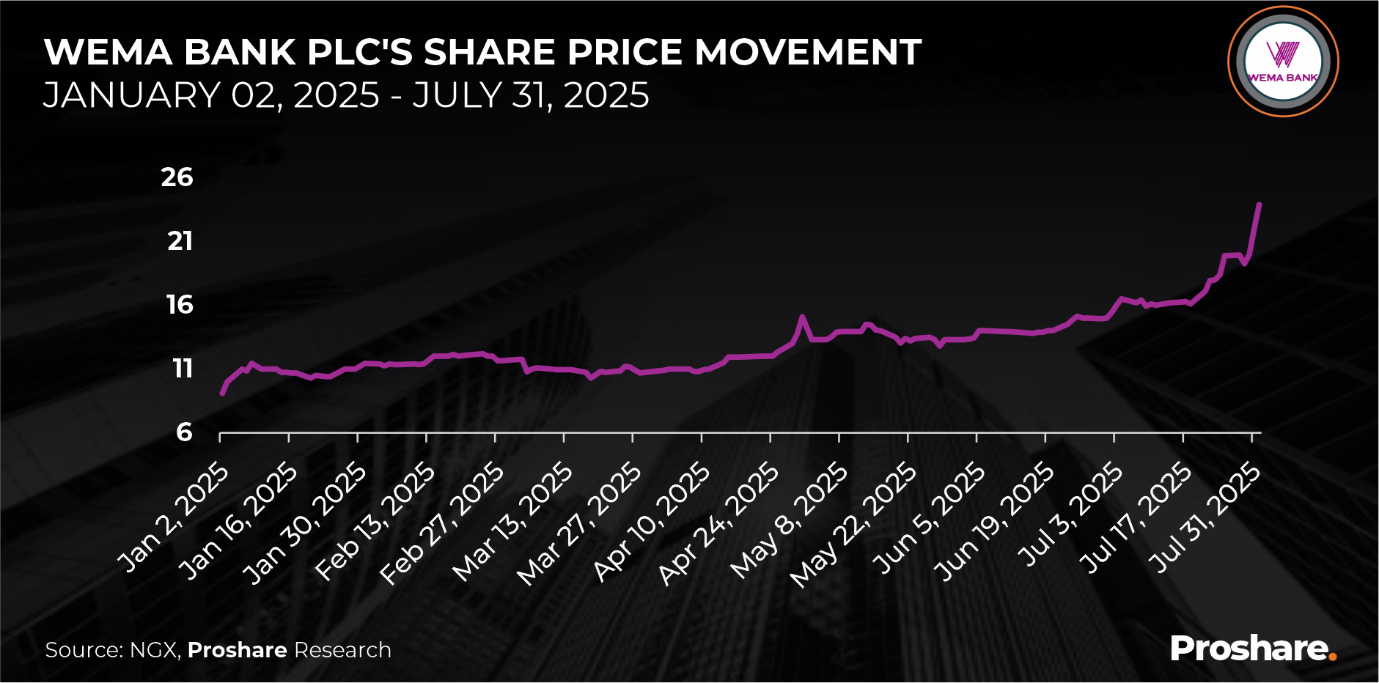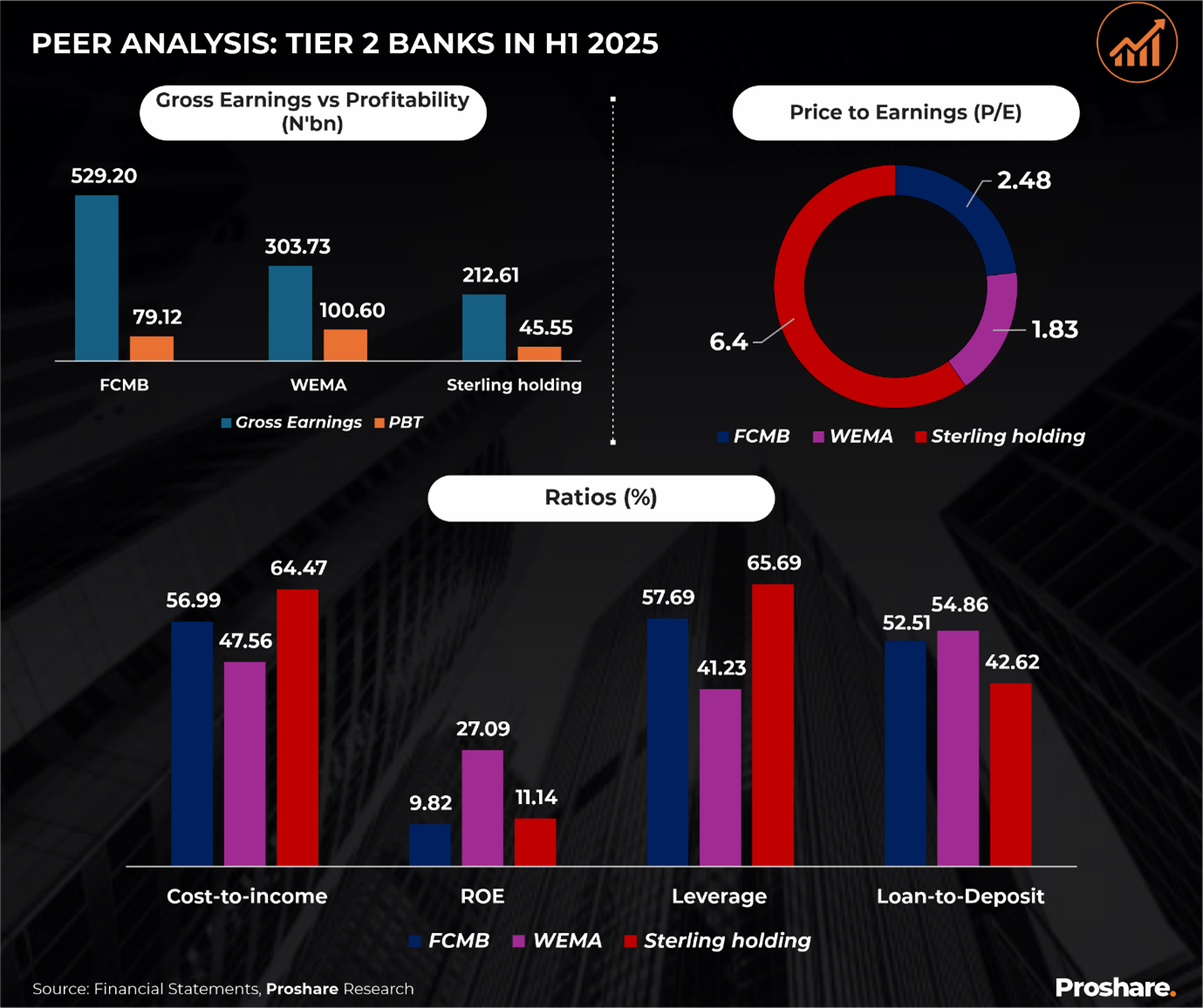Wema Bank H1 2025 Result: Gross Earnings Pushed PBT up by +229.12%

Fundamentals:
Fitch Ratings revised Wema Bank PLC’s outlook to positive from stable on Tuesday, while affirming its Long-Term Issuer Default Rating at ’B-’. The agency also upgraded the bank’s National Long-Term Rating to ’A-(nga)’ from ’BBB (nga)’. The outlook revision reflects expectations that Wema’s core capital buffers will strengthen over 2025-2026, supported by capital raisings and higher internal capital generation. This improvement benefits from higher interest rates and a shift away from expensive time deposits.
Wema Bank’s H1 2025 performance marks a defining moment in its growth trajectory, signalling a strategic shift from a niche digital player to a formidable force in Nigeria’s tier 2 banking space. Against a backdrop of rising inflation, tighter monetary policy, and currency volatility, Wema Bank delivered a solid performance that defied market expectations. The bank not only posted impressive profitability metrics but also led its peers in operational efficiency and return on equity, underscoring the strength of its business model and execution strategy in a challenging macroeconomic environment. At a time when many financial institutions are navigating cost pressures and liquidity constraints, Wema Bank has emerged with a bold narrative, one of earnings resilience, balance sheet discipline, and attractive market valuation (see illustration 1 below).
Nigeria Real Estate Market Trends
Illustration 1:

Financials:
Wema Bank’s total assets grew by +46.46% to N3.97trn in H1 2025 from N2.76trn in H1 2024. The asset growth was primarily driven by loans and advances to customers (+46.46%) and investment securities (+74.83%). The higher credit creation and increased investment securities would generate higher interest income in subsequent quarters. The bank’s retained earnings grew by +198.40%, fuelling a +62.67% in shareholders’ fund to N323.12bn. However, cash and cash equivalents declined by -11.86% from N267.31bn in H1 2024 to N235.62bn in H1 2025 (see table 1 below).
Table 1:

Financial Ratios
The group’s financial ratios improved in H1 2024, reflecting better liquidity, efficiency and risk quality position. Cost-to-income ratio fell to 47.56% in H1 2025 from 66.65% in 2025, indicating the group’s efficiency in cost management. Net interest margin rose to 4.98%, while the leverage ratio declined to 41.23% (see table 2 below).
Table 2:

Technical Analysis
The group’s earnings per share (EPS) and share price rose in the first half of 2025. However, the increase in EPS is greater relative to the rise in share price, leading to a lower price-to-earnings ratio. Thus, the price-to-earnings ratio declined to 1.83x in H1 2025 from 2.94x in H1 2024, implying the stock was underpriced. Price-to-book ratio rose from 0.78x in H1 2024 to 0.99x in H1 2025 (see Table 3 below).
Table 3:

Share Price Movement
Wema Bank’s share price experienced a notable upward trend from N9.10k on January 2, 2025, to N22.00k on July 31, 2025, representing a +141.76% increase over the seven months. However, Wema Bank has a 52-week range of N6.00 – N24.80, with a 52-week low of N6.00 on August 16, 2024, and a 52-week high of N24.80 on August 5, 2025 . The price trajectory reflected improved investor sentiment, earnings momentum, and potentially strategic market positioning by the bank. The spike in July followed the release of H1 2025 results, signalling speculative buying interest. Analysts believe the share price movement reflects speculative activity in a growth stock, as indicated by the rising EPS and ROE (see chart 1 below).
Chart 1:

Peer Analysis: Wema Bank Leads Peers in H1 2025
A comparative review of tier 2 banks’ H1 2025 performance revealed that Wema Bank stands out, delivering significant profitability and efficiency metrics relative to its peers. Despite recording lower gross earnings (N303.73bn) than FCMB (N529.20bn), Wema achieved the highest profit before tax of N100.60bn, outperforming both FCMB (N79.12bn) and Sterling Holdings (N45.55bn). This reflects strong cost discipline and operational efficiency, further reinforced by its lowest cost-to-income ratio of 47.56%. Wema Bank not only outpaced its peers in profitability and valuation metrics but also showed financial resilience and efficiency, positioning it as a compelling play among Nigeria’s tier 2 banks for the remainder of the year (see illustration 2 below).
Nigeria Real Estate Market Trends
Illustration 2:

Opinion:
Wema Bank’s performance in H1 2025 reflected a company in the midst of an intense growth phase, buoyed by rising investor confidence, improved market positioning, and potentially solid financial fundamentals. The impressive rally in its share price signals not just market excitement but growing belief in Wema’s long-term value proposition, particularly its digital innovation strategy and strengthening earnings capacity. Analysts believe that sustaining this momentum will depend on the bank’s ability to deliver consistent results in the second half of the year. As the operating environment evolves, shaped by monetary policy shifts, exchange rate dynamics, and rising competition, Wema Bank’s agility, asset quality, and revenue diversification will be critical.
As of 18 August 2025, analysts’ consensus recommended holding Wema Bank’s stock, with Capital Bancorp Securities suggesting a buy, while Meristem and Lead Capital advised holding, and Afrinvest recommended selling
Adapted from The Proshare




